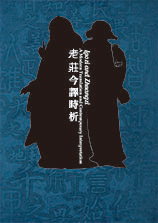Laozi and Zhuangzi – A Modern Translation and Contemporary Interpretation
Paperback, 452 pages
© Yew Chung Publishing House
ISBN: 978-988-78352-1-9
Language: Traditional Chinese and English
Publishing Date: Traditional Chinese August 2019
Price: HK$148
Laozi and Zhuangzi – A Modern Translation and Contemporary Interpretation is the second book of “The Chinese Classics Series”; the first book of the series, The Analects – A Modern Translation and Contemporary Interpretation. There are three traditions in the Chinese culture, namely Confucianism, Daoism and Buddhism; each has its own concerns and strengths. Looking from a philosophical perspective, Daoism has a relatively complete structure, covering fields from ontology and epistemology to ways to conduct oneself in society. Some of our basic concepts, such as the Dao, virtue, nothingness, existence and constancy, came from Daoism. Daoism’s influence on the Chinese culture is manifested in life attitude, literature and arts, and religion. Our understanding of the Chinese culture will not be complete if we have no comprehension of Daoism.
Laozi and Zhuangzi – A Modern Translation and Contemporary Interpretation is written mainly for students who are interested in Chinese culture. Its format is similar to that of The Analects – A Modern Translation and Contemporary Interpretation. However, the different features of Laozi and Zhuangzi have required a separate approach in the compilation of the two books.
1. As Laozi is written in a motto form and the themes of the chapters are rather scattered, we have assembled the contents according to the principle of “from something concrete to something abstract,” “from social phenomena to personal cultivation” and “from something metaphysical to something physical.” We consider this to be more in keeping with the way young people think. The text in Laozi is divided into five topics: Opposition to Harassment of People by Tyranny (the causes for tyranny and how to be freed from it); Non-Action (but things get done because the ruler allows people to organize themselves and non-governmental organizations to develop); Character Building (by recognizing how people have gained virtue and their characteristics); Ruling a Country with the Dao (conforming to the natural law of things, prevention of illness rather than its cure); and The Dao Follows the Rules of Nature (Laozi’s metaphysics, and the Dao’s main features and law). We use the themes of the five topics to explain Laozi’s views about social, psychological and natural phenomena. We also try to offer solutions to many contemporary problems that trouble people and society according to Laozi’s understanding of the Dao and general principle of “man follows the earth; earth follows heaven; heaven follows the Dao; and the Dao follows naturalness.”
2. Zhuangzi’s main thoughts are reflected in the seven essays in the “Inner Chapters,” generally believed to have been authored by Zhuangzi himself. The “Outer Chapters” and “Miscellaneous Chapters” are commonly considered to be the work of his disciples and are elaborations of the “Inner Chapters.” What we have selected from the “Inner Chapters” are the passages most representative of Zhuangzi’s thoughts. Zhuangzi’s thinking is systematic and strong in logic, and his writing makes smooth reading and is vigorous, unbound and inseparable. Unlike Laozi, where we regroup the contents according to the themes, in Zhuangzi we select the splendid stories from the chapters in their original order so that the main thoughts of Zhuangzi can be comprehended through them.
3. Taking into account the different cultural and religious backgrounds of our young readers and that the book has an English translation, we include comparisons between the thoughts of Laozi and Zhuangzi and those of the West, especially Christianity, to enable readers to capture the essence of Laozi and Zhuangzi.
REQUEST A COPY